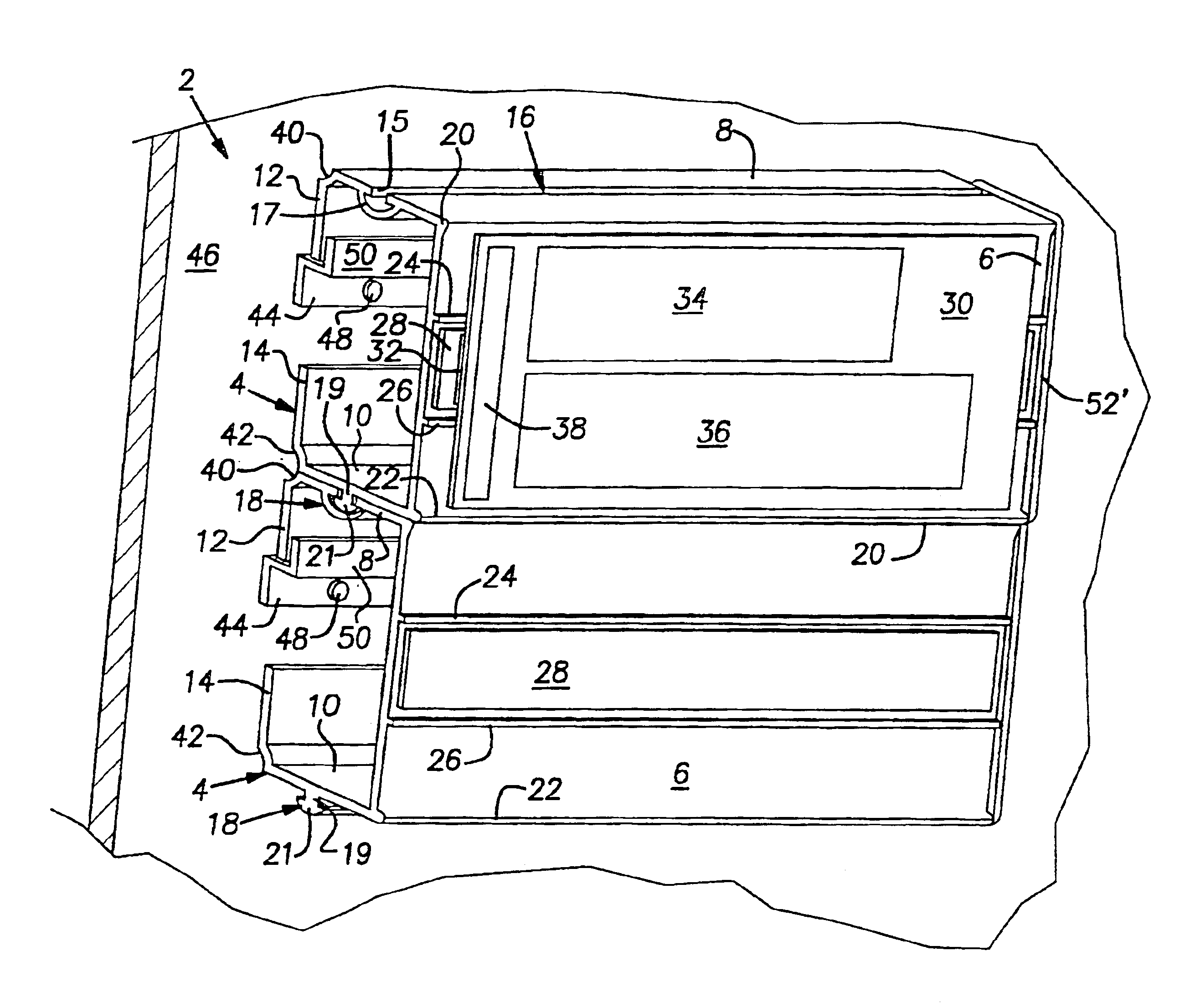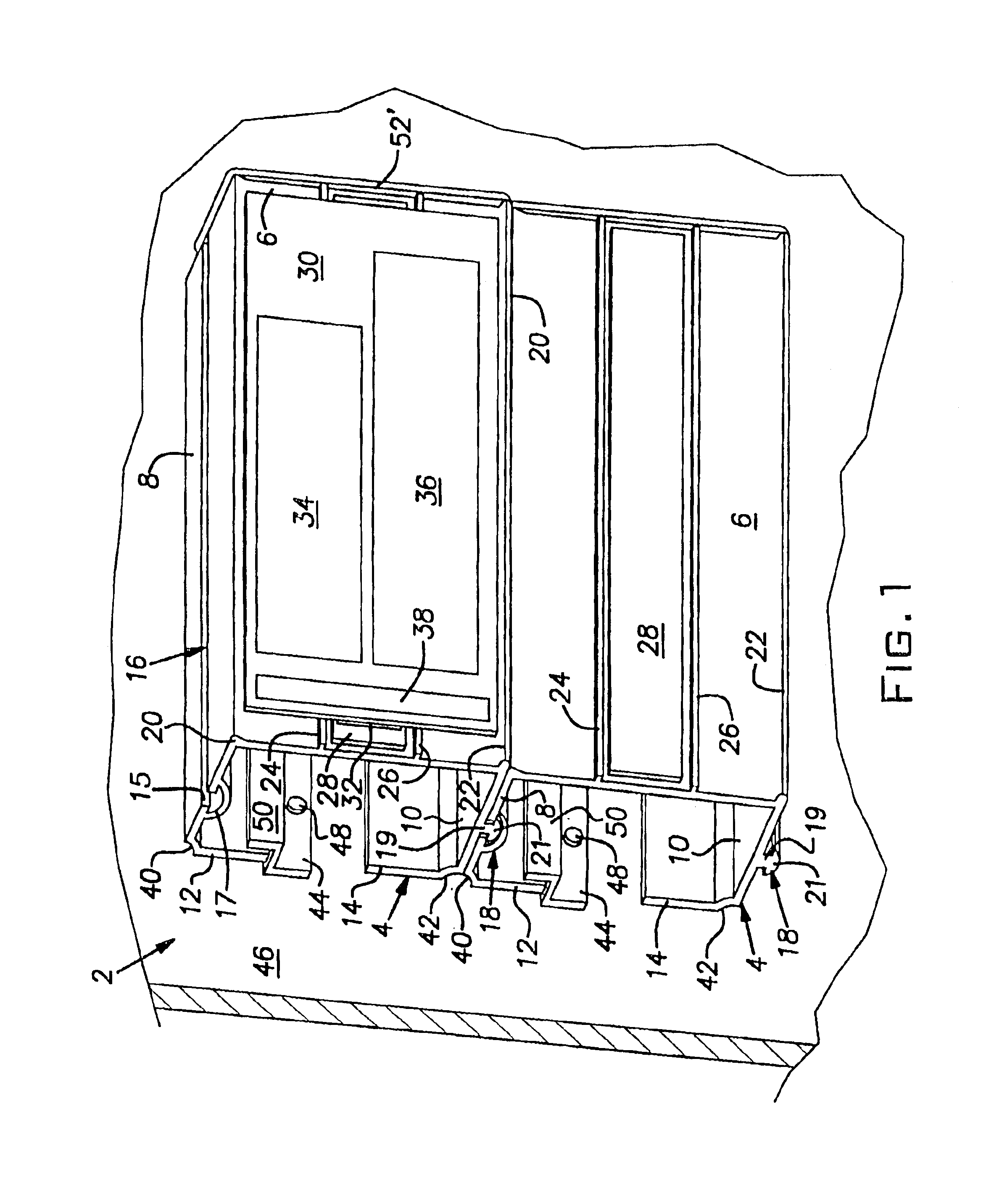Phonetic transliteration card display
a technology of transliteration and card display, applied in the field of creating a bilingual environment, can solve the problems of affecting the quality of life of both parties, and the inability of staff to perform certain tasks, and achieve the effect of large enough to be read easily
- Summary
- Abstract
- Description
- Claims
- Application Information
AI Technical Summary
Benefits of technology
Problems solved by technology
Method used
Image
Examples
Embodiment Construction
[0026]As shown in FIG. 1, a multilingual device 2 in accordance with the present invention comprises one or more display boards 4. Each display board 4 has a substantially C-shaped profile and is formed of a front wall 6, a top wall 8, a bottom wall 10, a rear upper flange 12 and a rear lower flange 14. A first connector in the form of a slot 16 in the illustrated embodiment extends along the length of the top wall 8. A second connector in the form of a protrusion 18 in the illustrated embodiment extends along the length of the bottom wall 10.
[0027]The slot 16 is defined by laterally extending ledges 15 and a semi-circular shoulder 17 secured to an under surface of the top wall 8 such that groove 16 has a substantially mushroom-shaped cross-section. The protrusion 18 is formed of a straight-sided rib 19 extending downwardly from bottom wall 10 and a semi-circular formation 21 at the end of rib 19. The configuration of the rib 19 and the formation 21 are such that the protrusion 18 h...
PUM
 Login to View More
Login to View More Abstract
Description
Claims
Application Information
 Login to View More
Login to View More - R&D
- Intellectual Property
- Life Sciences
- Materials
- Tech Scout
- Unparalleled Data Quality
- Higher Quality Content
- 60% Fewer Hallucinations
Browse by: Latest US Patents, China's latest patents, Technical Efficacy Thesaurus, Application Domain, Technology Topic, Popular Technical Reports.
© 2025 PatSnap. All rights reserved.Legal|Privacy policy|Modern Slavery Act Transparency Statement|Sitemap|About US| Contact US: help@patsnap.com



